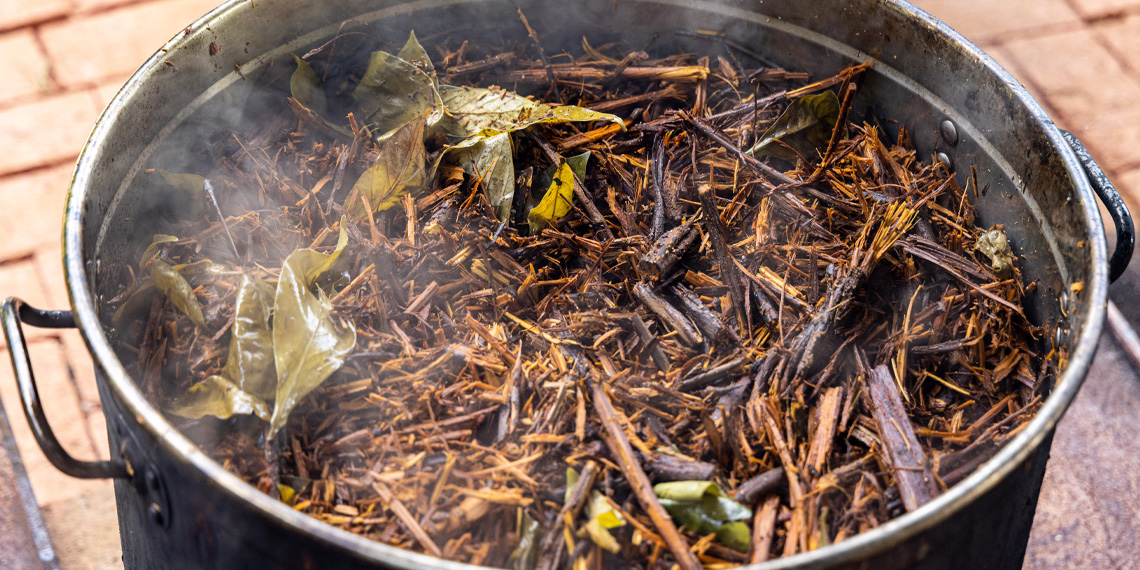A study examining the effects of harmine, a major component of ayahuasca, found that it produces no significant psychoactive effects in doses up to 500 mg. None of the participants experienced hallucinations or any notable psychoactive effects typically associated with ayahuasca. There were no changes in the mental status of any participants, although a few reported drowsiness. The paper was published in the Journal of Psychopharmacology.
Ayahuasca is a psychoactive brew traditionally used by indigenous Amazonian tribes for spiritual and medicinal purposes. It contains DMT (dimethyltryptamine) from the Psychotria viridis plant and monoamine oxidase inhibitors from the Banisteriopsis caapi vine, which prevent the breakdown of certain neurotransmitters. These substances produce intense hallucinations and altered states of consciousness in individuals consuming ayahuasca. The experience is often described as deeply introspective, emotional, and potentially therapeutic but can also cause nausea, vomiting, and psychological distress.
One of the monoamine oxidase inhibitors found in ayahuasca is harmine, a beta-carboline alkaloid present in Banisteriopsis caapi. It acts as a reversible inhibitor of monoamine oxidase A, an enzyme that breaks down neurotransmitters such as serotonin, norepinephrine, and dopamine in the brain and other tissues. As a reversible inhibitor, harmine temporarily binds to monoamine oxidase A, allowing the enzyme to function again once harmine is metabolized (in contrast, irreversible inhibitors permanently bind to the enzyme they inhibit).
Study author Jessica L. Ables and her colleagues sought to determine whether pharmaceutical-grade harmine (in the form of harmine hydrochloride) has psychoactive effects. They were also interested in identifying the doses at which these effects might occur and examining the relationship between harmine dosage and side effects.
The study involved 25 healthy volunteers recruited from the greater New York area, aged between 18 and 55 years. The researchers assigned 10 participants to receive 100 mg of harmine, another 10 to receive 200 mg, four to receive 300 mg, and one to receive 500 mg. Harmine was administered orally in capsule form as a single dose.
Participants were required to abstain from food and drink (except water) after midnight on the day of the study and to fast for the remainder of the day. At 9:00 AM on the study day, they took their assigned harmine capsules. Following this, they underwent various assessments at multiple time points. At 9:00 AM the following day, participants returned for follow-up medical assessments and provided final blood and urine samples. At 11:00 AM, they were offered a snack, and at 1:00 PM, they received a 350–450 calorie meal.
Participants provided blood and urine samples and completed assessments of mood (the Profile of Mood States Bipolar Scale), acute behavioral changes (the Brief Psychiatric Rating Scale), subjective state changes (using visual analogue scales), perceived stress (the Perceived Stress Scale), perceived side effects (the Patient Rated Inventory of Side Effects), and suicidal ideation (the Columbia Suicide Severity Rating Scale). The researchers also continuously observed participants during the study visit and monitored their vital signs every half hour for the first four hours after harmine intake, then hourly for the remainder of the visit.
Results showed that harmine produced no psychoactive effects. No participants reported, or were observed to experience, hallucinations or any other significant psychoactive effects associated with ayahuasca ingestion. There were also no significant changes in participants’ mental status, except that four participants reported feeling drowsy.
Aside from this, harmine ingestion resulted in mild adverse effects in two participants who received 100 mg. Five participants in the 200 mg group experienced mild to moderate adverse effects, and the pattern was similar for doses above 200 mg. The most common side effect was vomiting, followed by impaired concentration and drowsiness.
“We conclude that a single oral dose of harmine HCl below 200mg or 2.7mg/kg is generally well-tolerated in healthy young adults and that harmine itself is not the principal psychoactive component of Ayahuasca. Harmine, as part of the total β-carboline and alkaloid load in Ayahuasca, likely contributes to the vomiting, and perhaps some of the sedation, associated with Ayahuasca ingestion, but does not likely contribute to diarrhea,” study authors wrote.
The study sheds light on the effects of harmine. However, it was open-label, meaning participants knew what they were taking, which could have influenced the results. Additionally, the study was conducted on a very small group of participants. The findings of a placebo-controlled study with a larger sample size might differ.
The paper, “A Phase 1 single ascending dose study of pure oral harmine in healthy volunteers,” was authored by Jessica L Ables, Leah Israel, Olivia Wood, Usha Govindarajulu, Rachel T Fremont, Ronjon Banerjee, Hongtao Liu, Jeremy Cohen, Peng Wang, Kunal Kumar, Geming Lu, Robert J DeVita, Adolfo Garcia-Ocaña, James W Murrough, and Andrew F Stewart.




